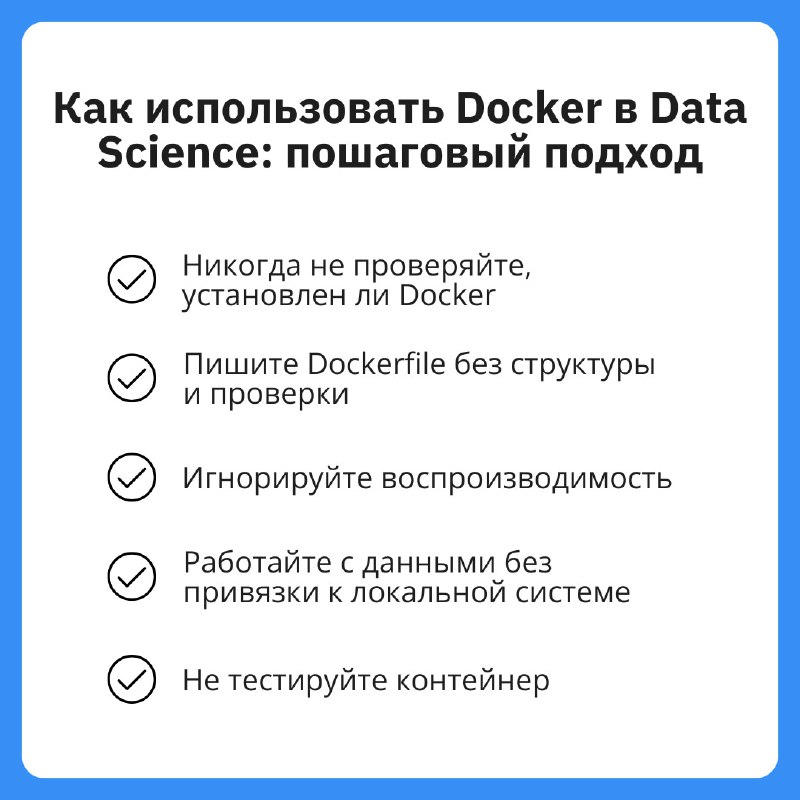tg-me.com/dsproglib/6325
Last Update:
Цель: обеспечить воспроизводимость, удобную работу с зависимостями и подготовку модели к деплою с помощью контейнеризации.
docker --version
docker run hello-world
Это подтвердит, что Docker работает корректно.
—
python:3.11-slim — компактный образ на Python—
jupyter/datascience-notebook — включает Jupyter и популярные библиотекиDockerfile и опишите в нём:FROM python:3.11-slim
WORKDIR /app
COPY . .
RUN pip install -r requirements.txt
requirements.txt содержит все зависимости проектаrequirements.txt, например: pandas==2.2.1
numpy==1.26.0
.git
*.csv
__pycache__/
docker build -t my-ds-image .
docker run -v /path/to/data:/app/data my-ds-image
docker run -p 8888:8888 my-ds-image jupyter notebook --ip=0.0.0.0 --allow-root
— Убедитесь, что установлен
nvidia-docker— Используйте флаг
--gpus alldocker run -it my-ds-image bash
python -c "import pandas; print(pandas.__version__)"
docker logs <container_id>
app.py)CMD ["python", "app.py"]
docker run -p 5000:5000 my-ds-image
—
tensorflow/tensorflow:latest-gpu — с поддержкой GPU—
continuumio/anaconda3 — включает Anaconda и библиотекиХраните
Dockerfile и requirements.txt в репозитории. Это залог воспроизводимости и эффективной командной работы в проектах Data Science.Библиотека дата-сайентиста #буст

